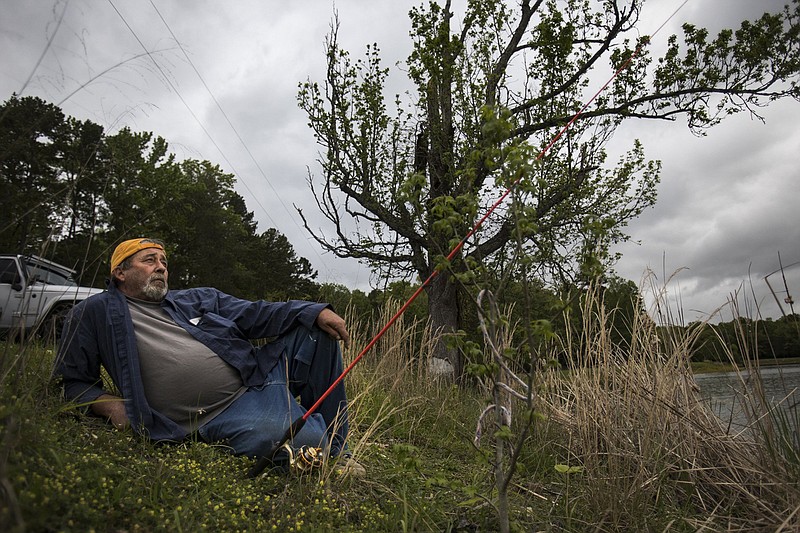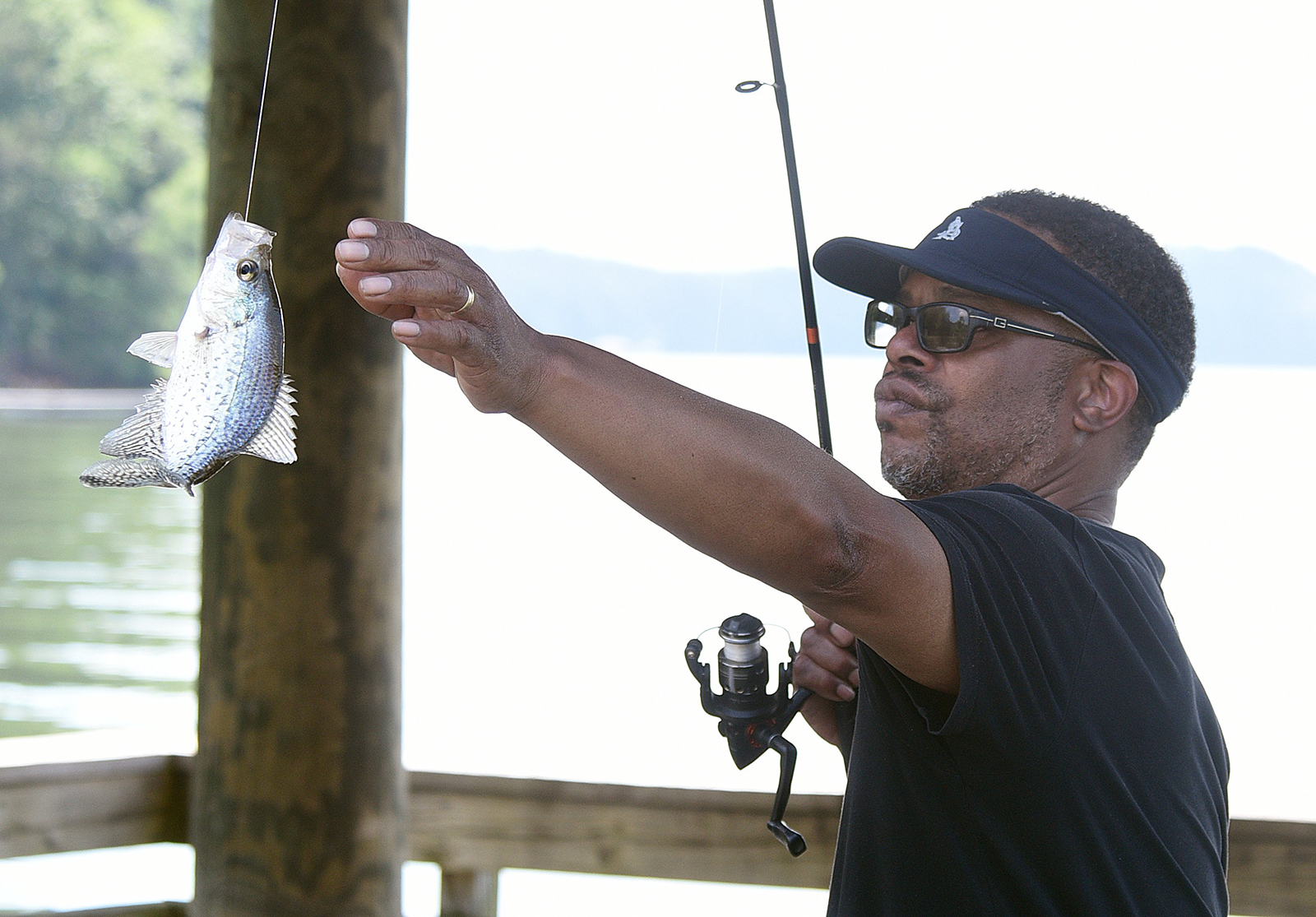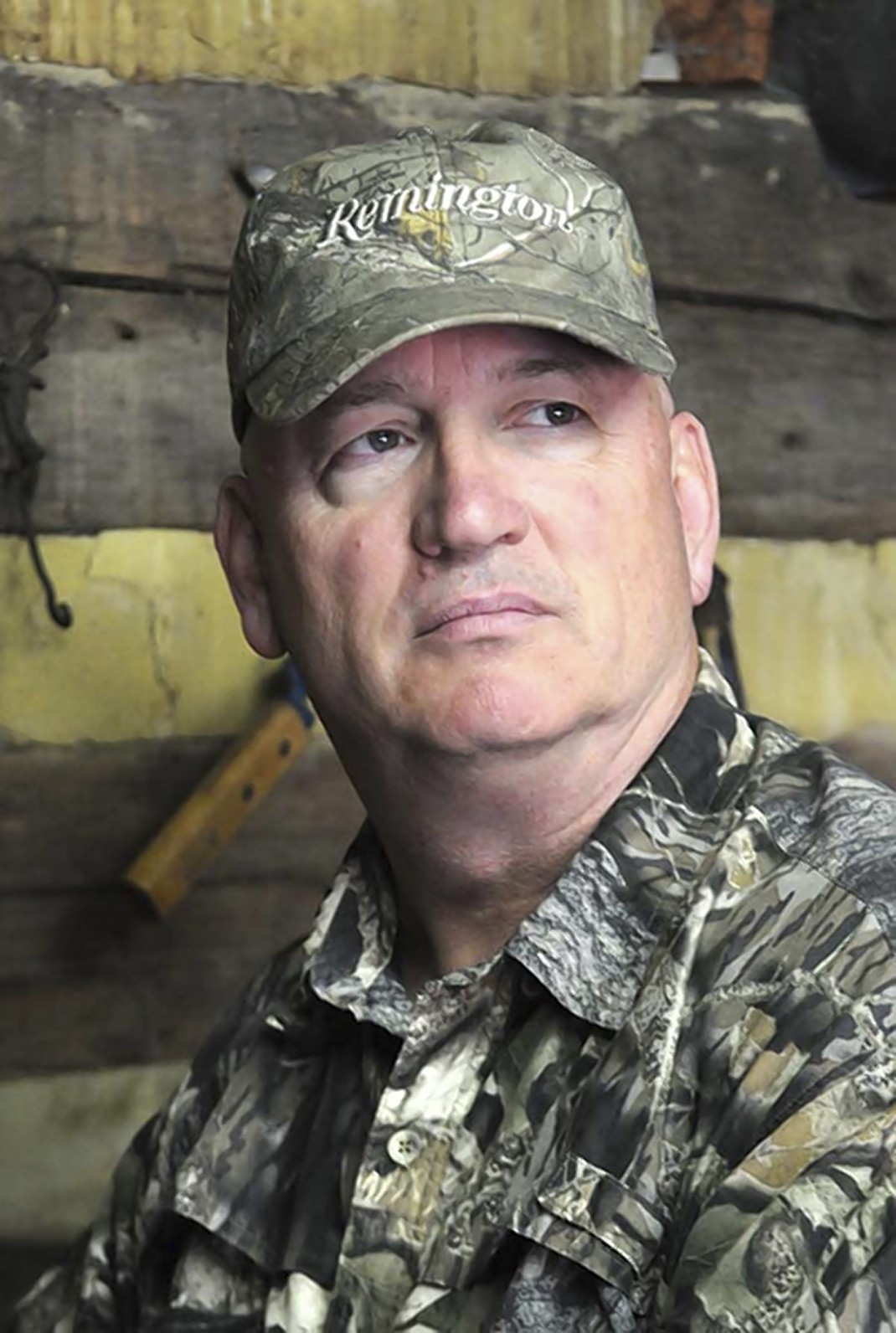People who know me will not believe this, but I am getting less confrontational.
I know, I know - you don't believe me, either, but I think it's true.
Some of the things I will bring up here could make for some very lively discussions at hunting camp, the barbershop, the bait shop or the boat dock. Now if you want to stay out of all this (and I don't blame you), just do what you should be doing this time of year anyway: Go leisure fishing.
Leisure fishing, you understand, is different from other forms of fishing. Trekking in several miles to a native brook trout stream is not leisure fishing. Neither is an entire day spent sweating in the sun while rowing a raft on a smallmouth bass river. These are not examples of leisure fishing.
Sitting on a dock or a riverbank in a comfortable chair, lobbing gobs of nightcrawlers or cut bait out into the water for hungry catfish is leisure fishing.
Understand, certain rules must be followed. All physical exertion must be kept to a minimum, the chair and surroundings must be very comfortable, and plenty of liquids must be on hand to stay hydrated (very important). As to the actual type and chemical makeup of the liquids on hand, this is up to your discretion. (I won't say anymore on that; this is a family-oriented outdoors column, you know.)
Well, as usual I digress, but you get the idea. If you want to stay out of these heated discussions, just go fishing.
The CWD problem has not gone away.
We have not talked about chronic wasting disease in deer for some time. One reason for that may be that not a lot has been said on the subject for a few years. Many states, and probably a lot of hunters, seem to have taken a stance on CWD that essentially says "let's ignore it and maybe it will go away."
I don't want to be the prophet of doom here, but CWD isn't going away.
The terribly frustrating thing about CWD is nobody seems to know exactly what to do about it.
As most of you know by now, CWD is an infectious disease that affects members of the deer family, cervids. Whitetail deer, mule deer, moose, elk and caribou are all susceptible to this always fatal disease. Wildlife biologists tell us CWD is not spread from bacteria or a virus but by a tough little varmint called a prion. These are infectious, single proteins that cause the spongelike degeneration of the brain in infected animals.
CWD was first recognized in captive mule deer at a research facility at Fort Collins, Colorado, in 1967. Since then there is a long list of dates and locations of where and when the disease has been found in deer and elk populations around the country. Currently there are at least 24 states and two Canadian provinces reporting the presence of CWD.
As of yet, no test has been devised for use on a live animal. There is no cure or remedy for CWD - again, very frustrating. A very big elephant in the room that I have not heard discussed lately is the specter of whether CWD is transmissible to humans from deer. Most scientists seem to agree at this time that the answer is no, the disease will not transfer to humans eating venison.
Will this status change? I don't know, but hunters need to keep informed on CWD.
What's up with the turkey population.
We touched on this a week or so ago, but I think it bears repeating: Most states in the Southeast are experiencing a decline in wild turkey populations, and many of them are trying to do something, anything, about it.
Getting hunters on board with what their local DNR and fish and game departments are doing is usually the hard part. Several states have reduced the bag limit in the spring season on gobblers.
Another big trend is many of us agree that predators of turkeys, especially those that prey on the nests of turkeys, need to be reduced. Raccoons, skunks and opossums are the main culprits here, and several states have increased the season and bag limit on these critters.
Will this help? I don't know - I am not optimistic about it, just to be honest with you. There are not enough trappers around anymore for a good touch football game, and the fur market has been dismal for several years.
Don't shoot little bucks and berate your fellow hunter if he does.
Ask anyone who has deer hunted for several years, and they can tell you the thinking about what size buck to take has changed. Not that long ago during the traditional rifle buck season, if a deer had antlers of any size, he was in dire trouble. Some would say it is still that way in many areas.
In recent years, though, many hunters have adopted a "let the little bucks walk" attitude, and they want to encourage other hunters to do the same thing. Several groups have formed and have adopted this thinking.
As you can imagine, this may lead to many different scenarios when deer season comes in. Typically, a group of hunters may hunt their own land, or lease an area for hunting, and unless this property is very large, say hundreds of acres, the deer for that area probably do not stay on that section of land. The hunters on this property may practice certain rules and let smaller bucks get bigger. If the neighbors on the property next door do not adhere to the same thinking and take any buck that has legal-sized antlers for that state, you can see how this might be a problem.
Some hunters will tell you they don't care about the size of antlers; they just want to put a deer in the freezer to eat. Advocates of letting smaller bucks walk will say OK, then you can take a doe if you just want to get a deer to eat, as many think the doe-to-buck ratio is way out of whack in most areas anyway.
Usually the state game agency is entwined in the middle of this, trying to manage the deer, and with at least two opposing groups, somebody is always unhappy with how the deer herd is being managed. I have no answers for this, but if you look on any of the deer hunting forums - or better yet the source of all knowledge, Facebook - you will see many different highly qualified deer hunters who are happy to give their opinion on solving this problem.
Like I said, if you don't want to fight about all this, just go fishin'. And bring me some catfish fillets.
"Guns & Cornbread" is written by Larry Case, who lives in Fayette County, W.Va. You can write to him at larryocase3@gmail.com.


